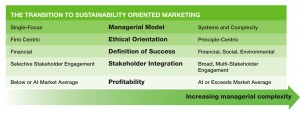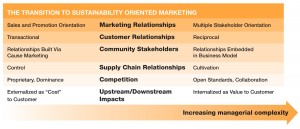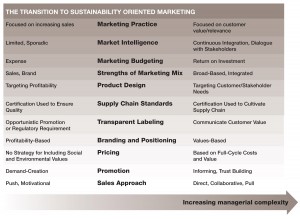Fostering Resilience: The Importance of Purpose in Good and Bad Times
Monday, March 23rd, 2009At some point in the lives of many of America’s newspapers, their purpose shifted. Many went from seeking to “empower a democratic society with a free press†to “delivering an audience to advertisers.â€
We in the Seattle area watched this month as nearly three decades of changes in the newspaper industry brought down the Seattle Post-Intelligencer. It would be simplistic to say that loss of the original purpose was the turning point in the newspaper industry’s demise. Many complex factors including the rise of the Internet have contributed to their current dire circumstances.
While many reporters and editors remained motivated by the ideal of a free press, their management was focused on a specific form of revenue creation (selling advertising) which did not allow newspapers to adapt as the market has changed.
Ted Levitt made this point years ago in his famous “Marketing Myopia†article: adapting over time means focusing on the evolving needs of customers, not selling a particular business model. Holding fast to the importance of a free press as an agent of enlightened democracy might have helped newspapers cling less tightly to the advertising paradigm and evolve their revenue models in service of the greater purpose.
A focus on how we seek to make the world a better place helps companies stay clear and resilient in troubled times. When economic conditions are volatile, business models focused on purpose provide clarity about what needs to change and what should never change in the business. This focus on purpose does four things for an organization:
- Provides a strategic focal point for aligning all aspects of the organization
- Creates the basis for powerful, trust-based marketing
- Establishes a foundation for positive corporate culture, and
- Taps the motivation and passion of employees and other stakeholders.
According to an article in the February 12 Gallup Management Journal, it’s more critical than ever that businesses and customers know what companies stand for.
The article describes the work of GSD&M Idea City in Austin Texas, a branding agency, as it helped Southwest Airlines describe their purpose. While many see Southwest as simply the low-cost provider, for founder Herb Kelleher, the point is making air travel accessible. The agency gave him the language to describe his purpose: “democratizing the skies.â€
A friend of Hosfeld & Associates, Kip Gregory, author of Winning Clients in a Wired World, also runs a purpose-driven business. He works with clients to help them tap the enormous potential of the Internet and everyday technology to make their businesses more profitable. For Kip, the Internet is a banquet and many businesses can’t find the door in.
In talking with Kip about his purpose, I paraphrased: “You’re not in the technology business, Kip, you’re in the abundance business. Hundreds of the resources you share with clients are free, and yet they offer the opportunity for breakthroughs in productivity and profits.â€
Kip is successful because people recognize he’s not a geek who loves technology (not that there’s anything wrong with being a technology-loving geek); but a client champion who uses technology to make them more successful.
Studies suggest that purpose-driven businesses outperform companies without a purpose. Southwest Airlines is one of several firms cited in the book Firms of Endearment, which describes the characteristics and performance of companies committed to a purpose. Firms of Endearment (or FoEs) that they studied returned a 1,026 percent for investors over the 10 years ending June 30, 2006, compared to a 122 percent return for the S&P 500.
Companies with purpose are not immune to economic downturns. Some of the firms described in the book, including Harley Davidson, have taken significant hits in the last several months. Yes, further studies suggest that companies committed to purpose recover more quickly after economic challenges.
Companies with purpose, those that take a stand and build their business on making the world a better place, stand out with consumers. They foster trust and loyalty. Companies with loyal customers succeed in good markets, and have more going for them in difficult times.
If you’d like to find out how to align your organization’s operations and brand around a compelling purpose, please contact us.



